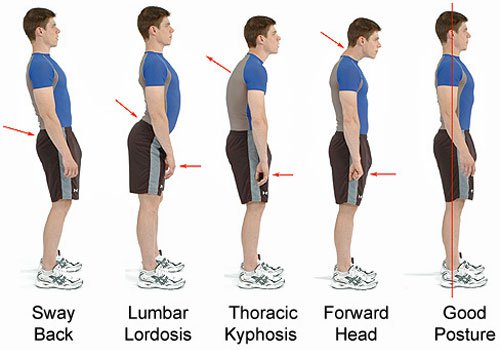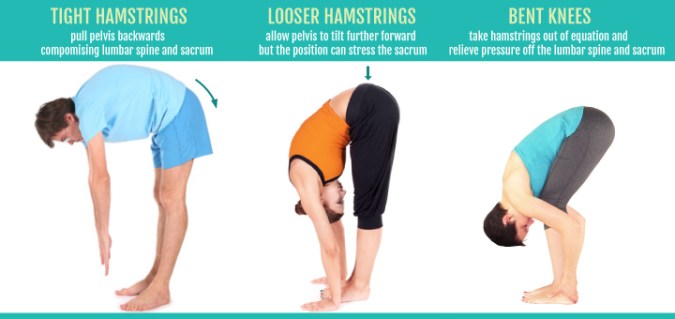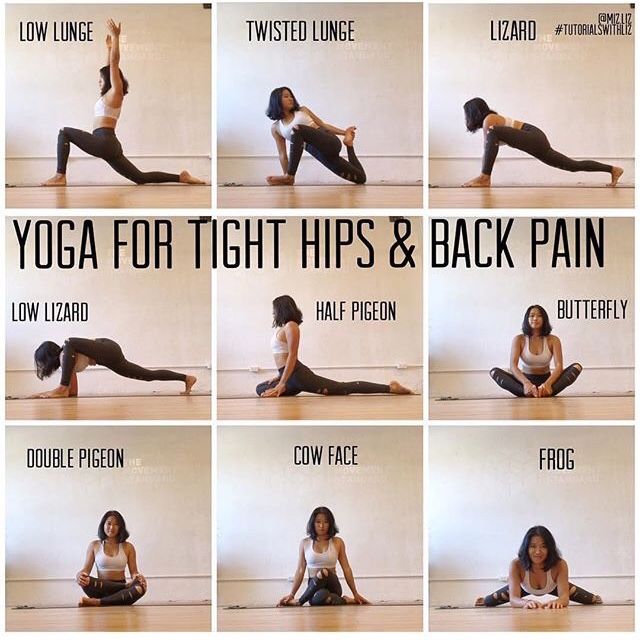Poor posture is a big visual indicator that the body’s health isn’t in good condition. Office work and sitting for long periods of the day can contribute to muscle tightness, which in turn can affect posture and the overall health of the spine. This blog will identify the common areas that get tight and how this impacts the alignment of the spine.
Why Healthy Posture Is Important
When your spine is healthy, the pathways of the nervous system become strong and clear. Vital energy, blow flow, nutrients and so on, can flow around the muscles and organs of your body, which maximises your vitality and well-being. If you’re hunched forward at the shoulders, this will naturally create a shortness of breath as your body compresses forward. If you’re slouching then you’re stomach is also compressed, which means you slow digestion and inhibit healthy blood flow (this call also lead to weight gain). An over-exaggerated arch at the lower back can impact how your body moves, it weakens your core, hamstrings and glutes, which in turn can lead to lower back pain.

Tight Hamstrings
Image 1
Hamstrings are a common muscle group to experience tightness as a result of sitting for long periods of the day. However, the hamstrings can also become tight through excessive use without stretching (through activities such as football, cycling, etc). The hamstrings attach to the base of the pelvis and run all the way down towards their insertion point just below the knee. So imagine if this muscle gets overly tight and shortens, it can tug on the base of the pelvis and create what is known as a “flat back” or “sway back”. In both cases, the natural arch of the lower back has now been flattened out. This can lead to cases of mild or severe back pain (depending on how severely the pelvis becomes misaligned). As a result of a flat/sway back, the shoulders can end up protruding forward, along with the head and neck, in combination with tight chest muscles.
In sway back conditions, as your hips end up extending forward to compensate for the muscular imbalance, this pushes your knees into hyper-extension, which can lead to joint instability and pain. If one area of the body goes wrong, this has a chain reaction that ripples into other regions of the body. As the quadriceps are the opposing muscle group that work with the hamstrings, these muscles become weak as a result of the hamstrings becoming overly tight.
Fortunately there are an endless array of hamstring stretches within yoga, ranging from a standing & seated forward bend, to pyramid pose, half splits, and so on. If the hamstrings are overly tight, some stretches are better off performed with bent knees to prevent the tight muscle from tugging on the pelvis. If your standing forward bend resembles the guy to the left of the image below, then you should bend your knees.

Tight Hip Flexors
Image 2
Being in a seated position means that your hip flexors are naturally in a shortened, flexed position. Over time, this muscle starts to tighten and become restricted. In addition, your glutes become weak from under use, which means they can’t effectively perform one of their important functions (supporting the pelvis and spine). These factors can create an anterior pelvis tilt (meaning the top part of your pelvis tilts forward) which creates pressure at the lumbar/lower back. This can cause the discs to degenerate and nerve roots to become compressed – which is highly likely to cause back pain.
Having your pelvis titled at such an angle causes a chain reaction in the body that leads to other deficiencies, such as weak abdominals and glutes, both of which are muscle groups that aid in giving the spine support.
Yoga poses such as lizard/runners pose or a low lunge can help add length to the hip flexors. Other poses such as pigeon pose or eye of the needle can open the outer hips and add length to shorten glutes (very effective for helping to relieve sciatic). Poses such as chair pose or bridge, strengthen both the glutes and thighs, helping to provide the necessary strength to stabilise the body.

Tight Chest & Neck Muscles
Image 3 & 4
Having your upper body in a hunched forward position when at a desk or looking at your phone can cause the muscles round the chest, neck and shoulder area to become shorted and tight. This problem becomes compounded if repeated frequently and for long duration’s. Once the muscles round the front part of the body become tight, the muscles at the back lengthen and weak to compensate for the shortened muscles at the front. As a result, your shoulders round forward. This not only limits your shoulder mobility, but can lead to upper back and neck pain as a result. The muscles round the chest also impinge on nerves, which can end up sending pain or a tingling sensation down the forearm into the hand and wrist. The combination of tight and weak muscles round the upper front and back part of the body can also lead to headaches and migraines.
To counter this rounding forward of the shoulders, chest openers, shoulder mobility exercises and strengthening exercises for the upper back can help rectify the problem. Upward dog, cobra, camel hinge and humble warrior are just a couple of many yoga poses that stretch out the key muscle group that gets tight leading to rounded shoulders. Additional poses such as locust and bow pose open the chest whilst simultaneously strengthening the back.

What The Body Needs
To simplify, the muscles that become tight need to be stretched, and the muscles that have become weak need to strengthen. Think of it this way, there is a tug of war going on between two muscle groups and the tight muscle group is winning the battle. Yoga can be useful for opening up tight areas and strengthening the weak spots. Be as specific as you can when detailing any back pain you have to your yoga teacher, so they can identify what areas of the body need fixing and in what manner.
Hi, many thanks for these clear and useful explanations. Since one year , I ‘ve been wondering why my belly is very tight and full of tensions , preventing deep breathing , especially after a meal. After investigations , I realized that it was due to a thoracic Kyphosis posture. In fact , after performing streching and opening chest exercices, all the tensions moved to belly. Finally , after strenghening my (upper) back, my posture is becoming normal and the belly tensions are diseappearing. I wanted to share with you my experience.
LikeLiked by 1 person